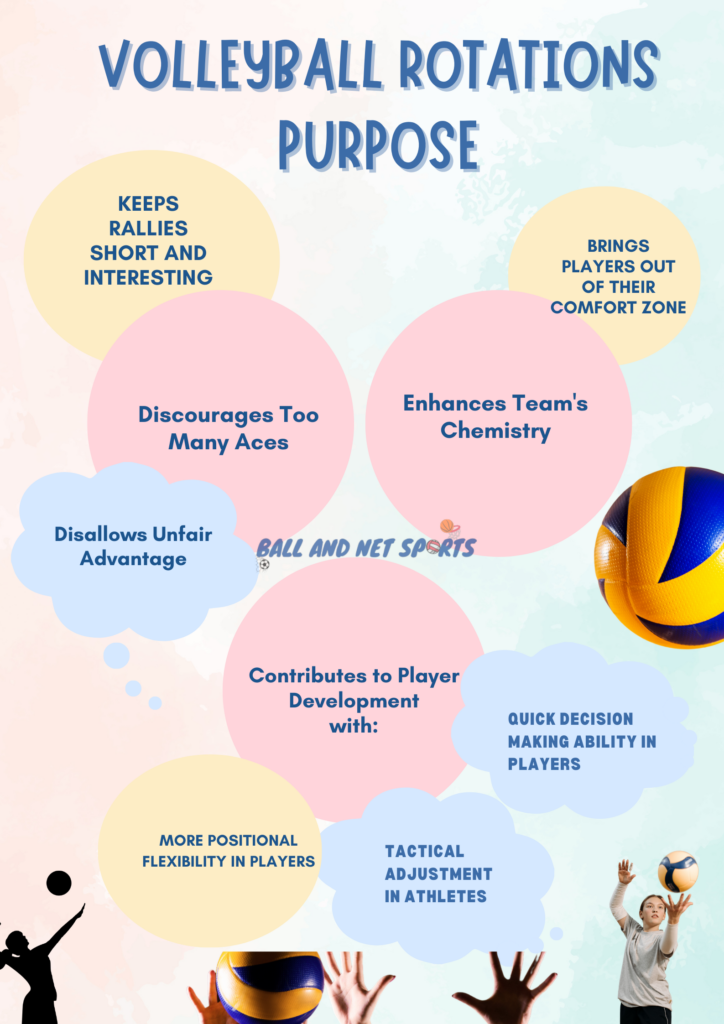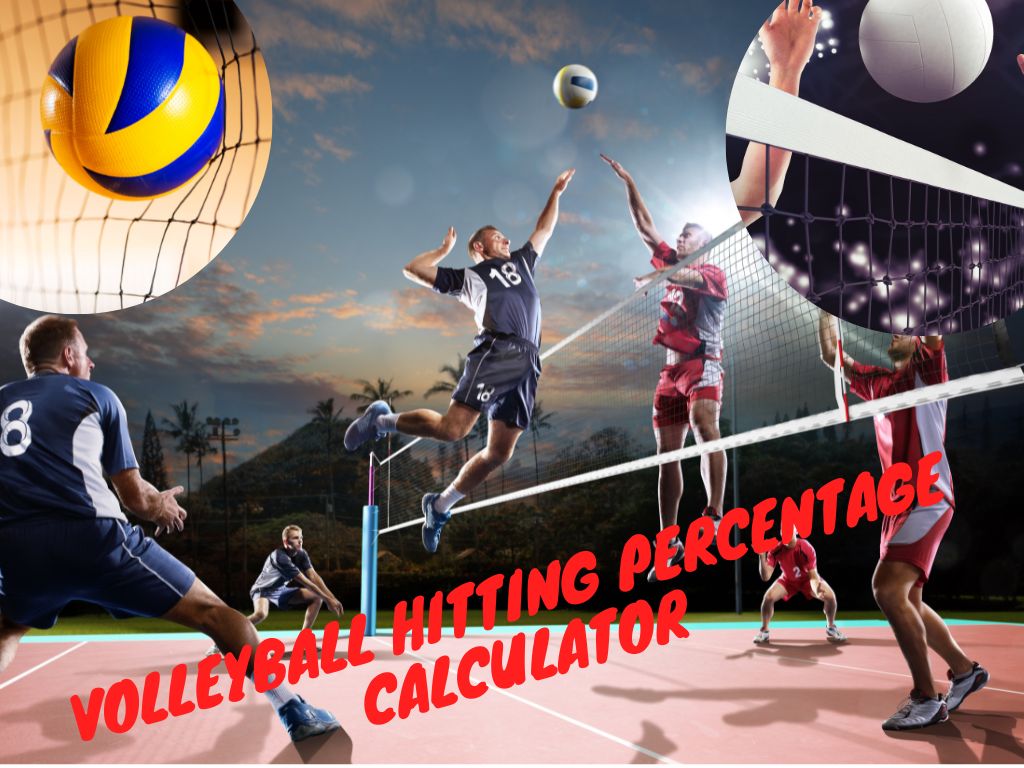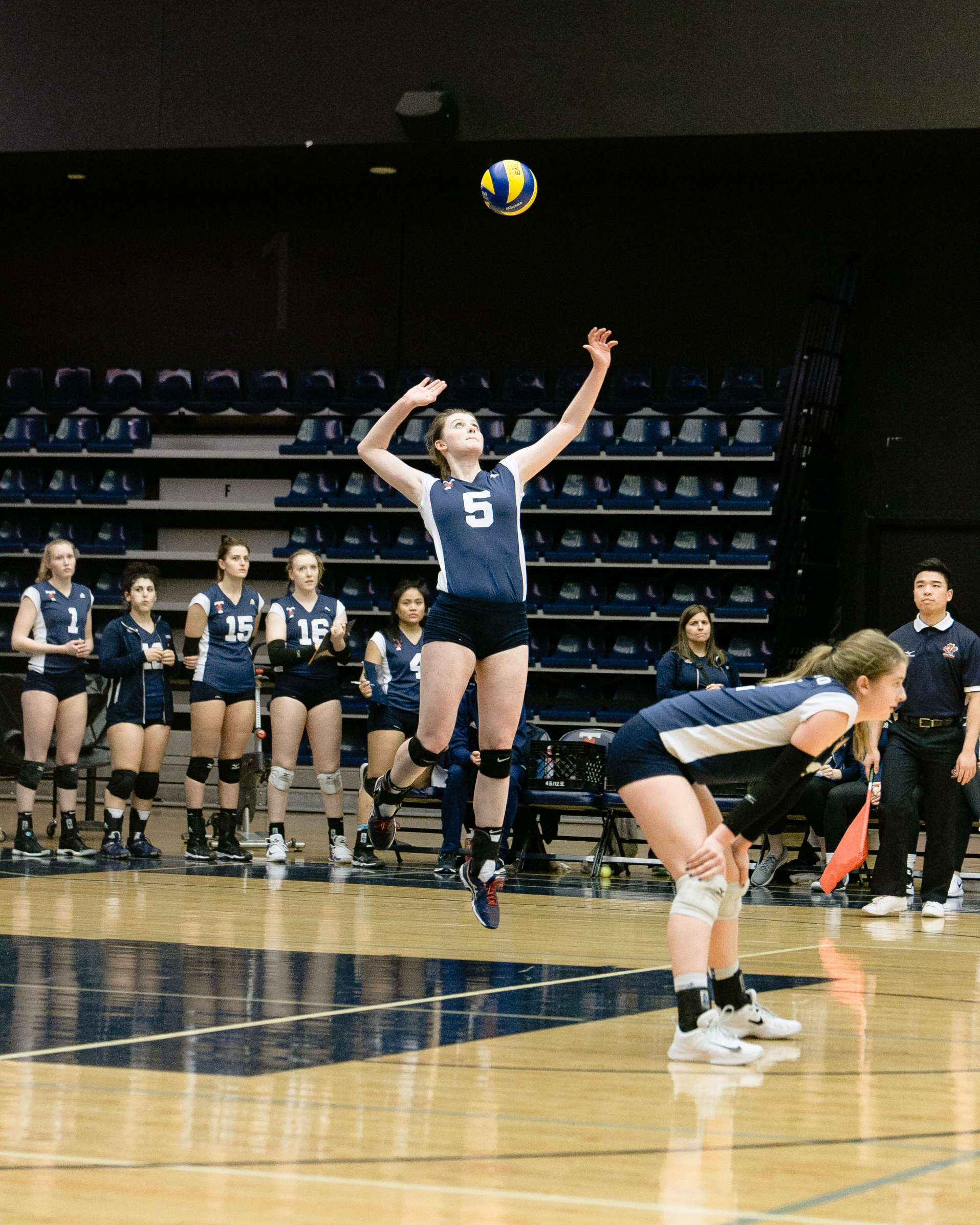What is the Purpose of Rotation in Volleyball?

At first glance, it seems that volleyball rotations have only one purpose: to let every player on the team serve the ball. In fact, you will see many volleyball enthusiasts saying that this is the only purpose of this rule.
But there is more to it.
Volleyball rotations serve the purpose of letting players develop skills out of their comfort zones, makes the game interesting, less boring, enhances team dynamics, reduces aces, among other things. While critics believe that volleyball rotations is just a conventional thing, this is not the case.

What is the Purpose of Rotation in Volleyball?
Let’s see what is the purpose of volleyball rotations and why are they important in a volleyball game.
Volleyball Rotations Make The Game Interesting
If every player is allowed to play in their area of interest without rotation, everyone will choose the court position they like the most.
This would eventually make the game much more boring and rallies much longer. So, one of the important purposes of volleyball rotation is to make the game interesting and time-bound.
It Allows Players to Develop Skills Out of their Comfort Zones
Let’s admit it.
All of us have a favorite (and least favorite) position to play on a volleyball court.
But rotation rules disallow us to play the whole game in that favorite position. This means that players have to play in positions they are not comfortable at.
This is where players get to learn about the game better and try to develop their specific skills in every position. They get out of their comfort zones and practice the drills that are not specifically made for their own role.
Volleyball Rotations Dissallows Teams to Score Too Many Aces
If a specific volleyball player is allowed to make serve again and again, they can master this art to an extent that they can easily score aces against their opponents.
In fact teams specifically train on how to avoid aces in volleyball, since this offensive strategy is employed by many teams.
But rotation disallows a single player to serve continuously to reduce their chances of scoring back to back aces.
Rotations Enhance Team Dynamics
Volleyball rotation enhances effective communication and coordination among players, enhancing team dynamics and chemistry.
All the players in the team know what to expect of other team members in any specific position. This way, players even try to cover the athletes who are not so strong in their new position.
And they do not worry about the athletes they know are strong enough to tackle any position. This indirect communication among team members improves dynamics among players.
To Keep the Opposition Teams Guessing About the State of Play
If all the players are playing in a fixed position on the volleyball court, the opposition can start knowing what will come next.
This will leave the game up to the guesswork. But when players rotate, it’s hard for the opposition to know how the new player will behave in that specific role, which makes the game more interesting, engaging, and challenging.
To Stop Teams From Unfair Advantage
If there were no rotations, teams would have been placing their tallest and most powerful players right in the front row. This would have helped them in blocking the attacks from the opposition as well as hitting the ball with exclusive force, thus trying to dominate the game.

This would have been even more consequential if the opposite team did not have any tall players on the team. But with rotations in action, every player needs to move strategically, which increases the chances of fair play.
Volleyball Rotation Contributes to Player Development
With every position on the volleyball court comes specific responsibilities. When players know they have to play in different positions, they do specific drills based on that position, get themselves disciplined, and be ready to contribute to the team’s success in whichever role their team needs them.
While this may sound bizarre, but volleyball rotation is a useful rule to help player development in the following ways.
It Develops Positional Flexibility for Volleyball Players
Players are required to be adaptable and play in different positions throughout the game due to rotations. This challenges them to quickly adjust their mindset, skill set, and positioning based on their new role on the court.
Eventually, this fosters adaptability and the ability to perform effectively in various positions.
A professional player who is up for their development likes this positional flexibility. They will not hesitate to go through basic warm up drills for every position to master their game.
Rotations Force Players to Make Tactical Adjustments
Volleyball rotations result in different matchups and situations on the court. Players must analyze the new configuration and make tactical adjustments accordingly.
This requires problem-solving skills, such as identifying weaknesses in the opponent’s defense or exploiting gaps in coverage, to create effective offensive plays or defensive strategies.
To Develop Quick Decision Making Skills Among Players
As players adapt to different positions, they are faced with split-second decisions during the game. Not every player is comfortable playing in different positions, so everyone needs to make decisions out of their comfort zone.
Every player must quickly assess the situation, anticipate the opponent’s moves, and make decisions that benefit the team. This pressure-packed environment hones their decision-making skills, teaching them to think critically and make effective choices in high-stakes moments.
Is Volleyball Rotation Just a Conventional Thing With No Benefit?
For most critics, the volleyball rotation rule is just a conventional thing. They nullify most of the pro-rotation arguments, believing that players get back to their desired position once the ball is served.
So they suggest that the rotation policy is just limited to serving purposes. While this is true that players can move freely within the court once the ball is served, they have little time to do so.
This is the reason why most professional teams are reluctant to move their players to their favorite position once the ball is served. This is due to the fact that opposition teams can easily observe this strategy and launch a quick offensive against them.
Opposition can go for a kill before the players of the other team settle down. So, most teams do not go for this tactic despite the availability of options to do so.
Final Words
Just like any other volleyball rule, rotations have their own purpose. They are even more helpful for newbies and beginners, who have to develop their skills in various domains to be successful volleyball players.
While many players go to club volleyball to learn the art, it is due to these types of rules that volleyball is feasible to learn for people who are not into putting top money in coachings.

Ahmed is the founder of Ball and Net Sports, a platform where he writes about volleyball.
As a professional volleyball player who has participated in various national and international level volleyball competitions, he loves to teach other volleyball enthusiasts about the game.
He is now a professional volleyball coach who organizes volleyball camps and social events for talent hunting for top volleyball teams.
As a volleyball talent-hunting specialist, he loves to teach people how they can make their game better in the fast-paced volleyball environment where it is extremely difficult to get quality content free of cost.



